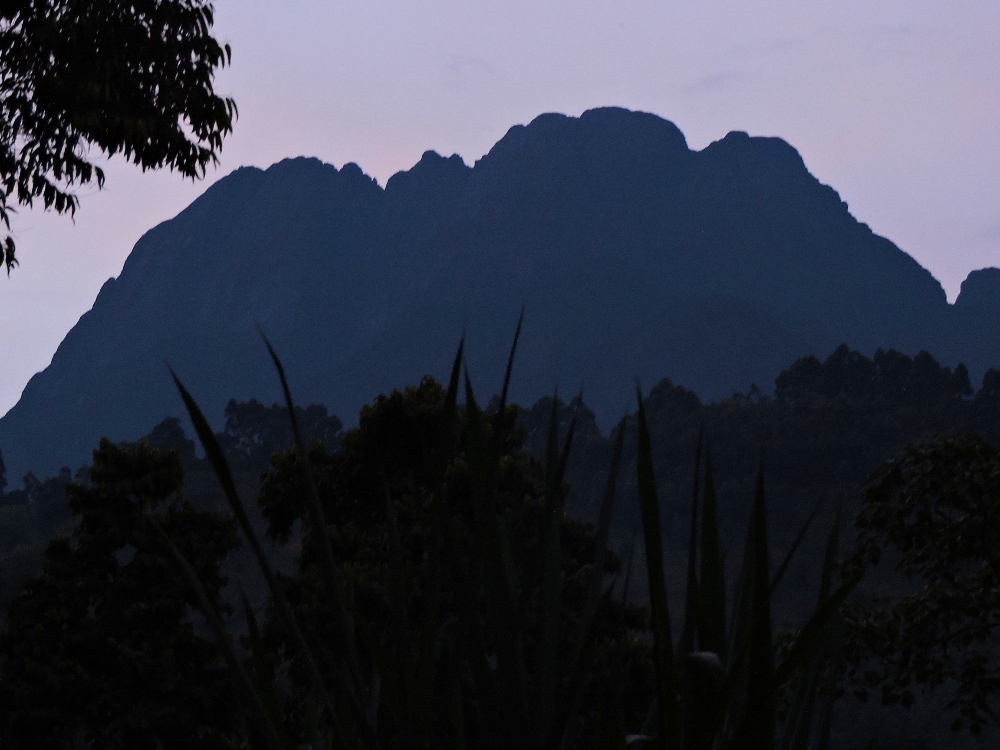Two and a half months had passed since I had last visited a World Heritage Site, a frustrating circumstance made worse by the fact that during that same period of time I tried, but failed, to see at least four of Africa’s relatively small collection of Sites. Two countries along my piecemeal route, Sierra Leone and São Tomé and Principe, currently have no Sites inscribed on the List, so that created a gap by default. I attempted to visit two other countries, with three possible Site visits between them, but was prohibited from entering those nations for reasons of mundane bureaucratic dysfunctionalities. In another case, I made overtures for a possible visit to the largest country in the region, which contains a handful of Sites in the Natural category, but which also represents the epitome of Difficult Travel, and I was unable to even crack open its obsequious procedures enough to even attempt a visit there. Eventually, I found myself in Uganda, a country with three Sites, but was quickly disappointed after going to its only Cultural Site, located in the capital, Kampala, only to discover that it was closed for renovations.
Uganda’s other two sites are National Parks, located in the southwestern part of the country, and that meant that several more days would be required before I could see them. However, at least this time I could be confident that once I arrived there, I would be able to appreciate them. The first along my route was Rwenzori Mountains National Park, and I knew from the start that my visit there would be rather minimal. The park contains a chain of high mountains that form the western border of the country and are part of the Albertine Rift system. Rwenzori Mountains was added to the List for its unique flora and fauna, and particularly as an example of the Afro-Alpine biome. However, to see the most interesting of these features requires a hike of at least seven days in length, one that gains 2,300 meters in elevation from the park entrance, itself at 1,700 meters above sea level. Since I have experienced the Afro-Alpine zone on my previous tour in this area, and since I was not really willing to commit the time and expense to go up there again, I resigned myself to a shorter visit in the lower Forest Zone, near the park entrance, where shorter trails could be taken during a single day.
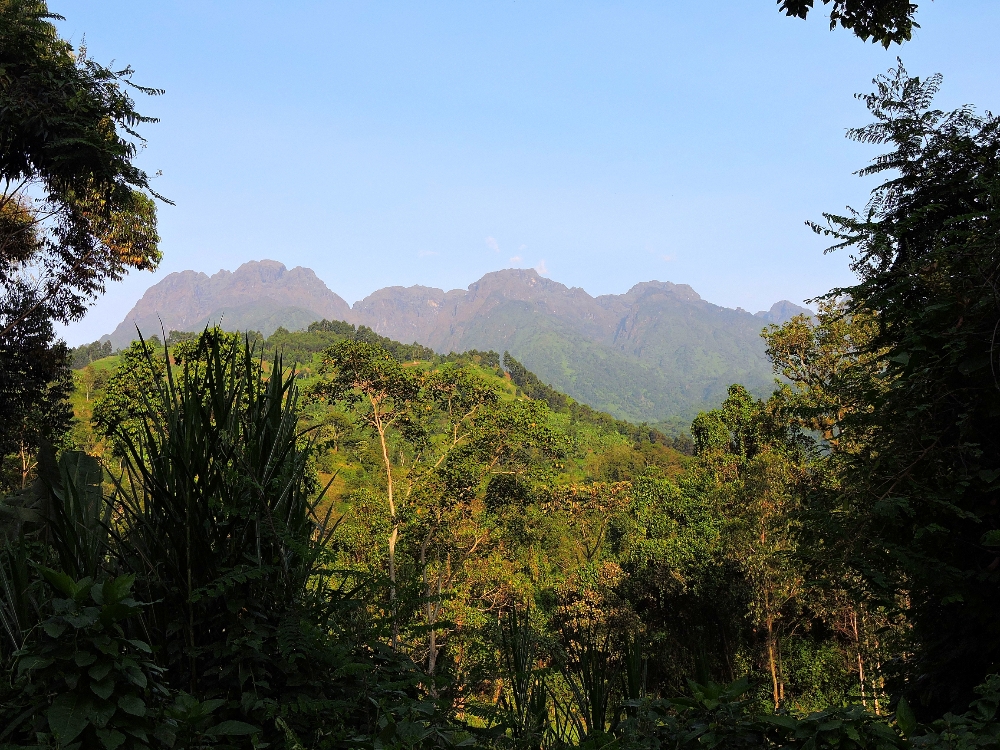
To reach the entrance required climbing around six hundred meters on a rather rocky dirt road up the Mubuku River valley, which was generally slow and tedious, but eventually brought me to within a kilometer of the park, where a few accommodation options were available. I used the Ruboni Community Camp, which is a locally run lodge that has nice cottages with wood-fired hot water, but no internet or phone service. In another example of the misfortunes of the year 2020, I learned that this May a terrible flash flood tore down the valley causing tremendous destruction, including wiping out the house and land of one of the workers at the lodge, and the loss of three lives. Previously the Mubuku Valley had consisted of grassy fields and sand bars, but now it was covered in boulders, as shown here.
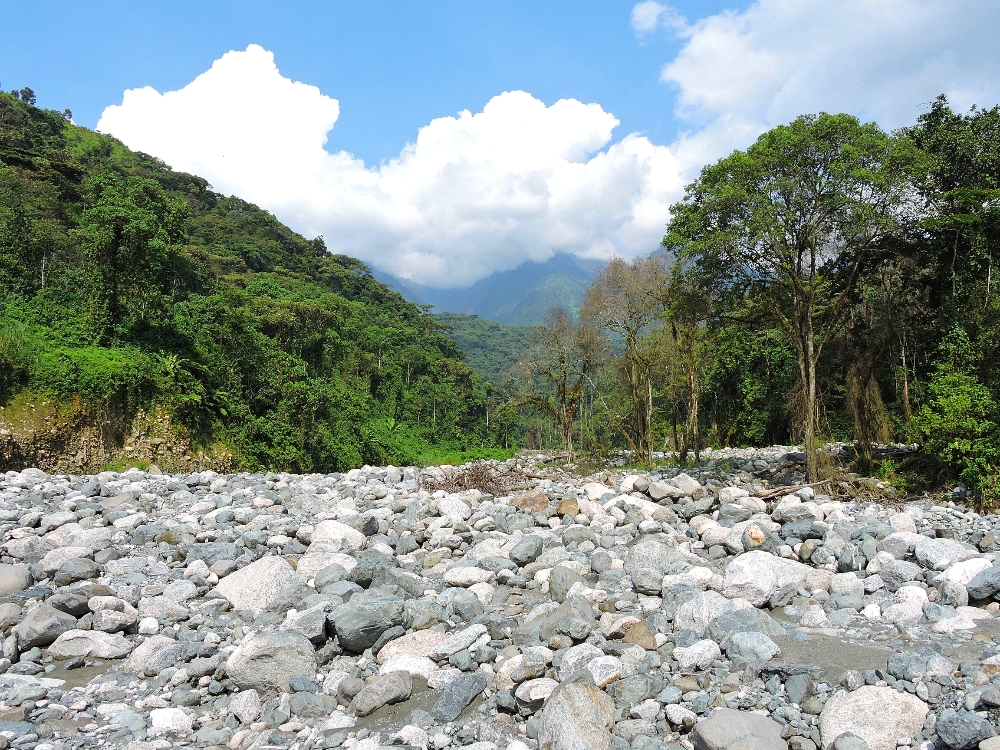
Walks within the park require a ranger to accompany visitors, and the fee for that, plus the park entrance, totaling sixty-five Dollars seemed a little steep for a day visit. However, when I arrived at around nine-thirty in the morning, there was no one present at the registration office. It was December 23rd, so I surmised that the imminent holiday may have been the reason for that. However, with all of my recent frustrations, I was not about to be foiled again by such an occurrence and snuck around the gate, intending to walk just a few hundred meters along one of the trails, just so I could honestly count that as a Site visit, but after only a few minutes a ranger appeared behind me, apologizing for the inconvenience caused by the entire staff being occupied with a meeting.
Shortly, my official walk was underway, through a nice humid forest that was not unlike most of the others I have seen in various places. I had hopes of viewing some of the area’s interesting birds, but most of them are more easily seen at higher elevations, and my best sightings came around the entrance gate, and along the road leading there from the lodge.
To better accommodate everyone’s holiday schedules, I stayed an extra day at the Ruboni Camp. They also have a selection of outdoor activities, and that day I went on their Forest Walk, which actually follows the degraded habitat along the Mubuku River for most of its duration, finally terminating in a small parcel of forest just inside the park boundary. This was actually quite a long walk of about four hours, but had a more affordable fee of only fifteen Dollars. The highlight for me was the three species of chameleons in the area, including the Strange-Nosed Chameleon, this Stripe-Sided Chameleon…
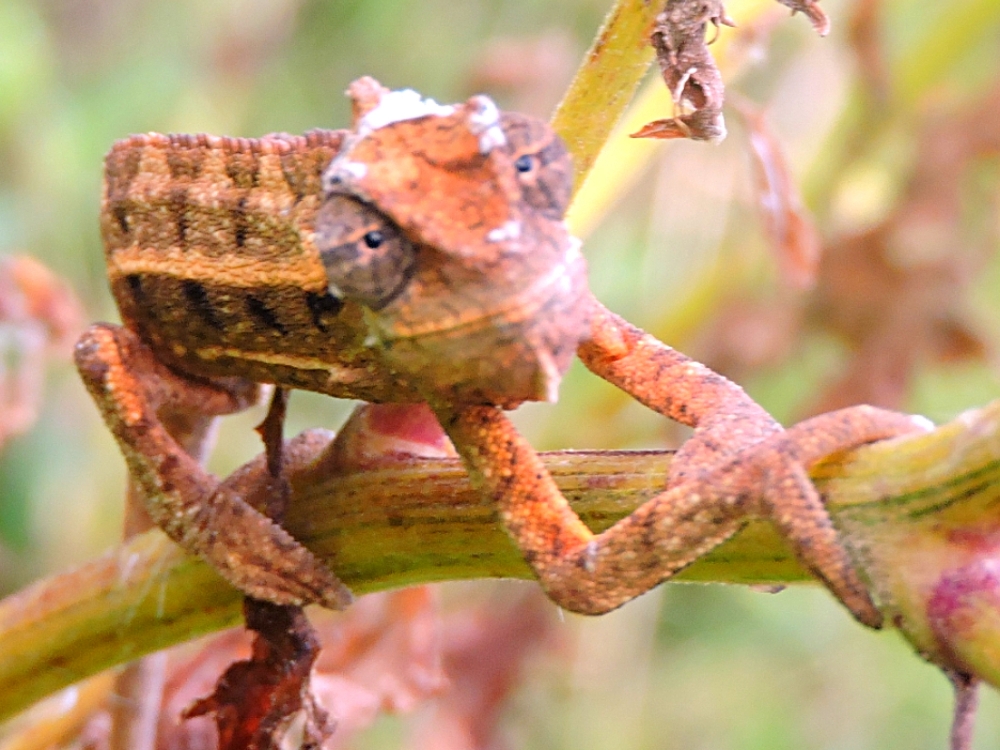
…and the very attractive and unusual Jackson’s Chameleon.
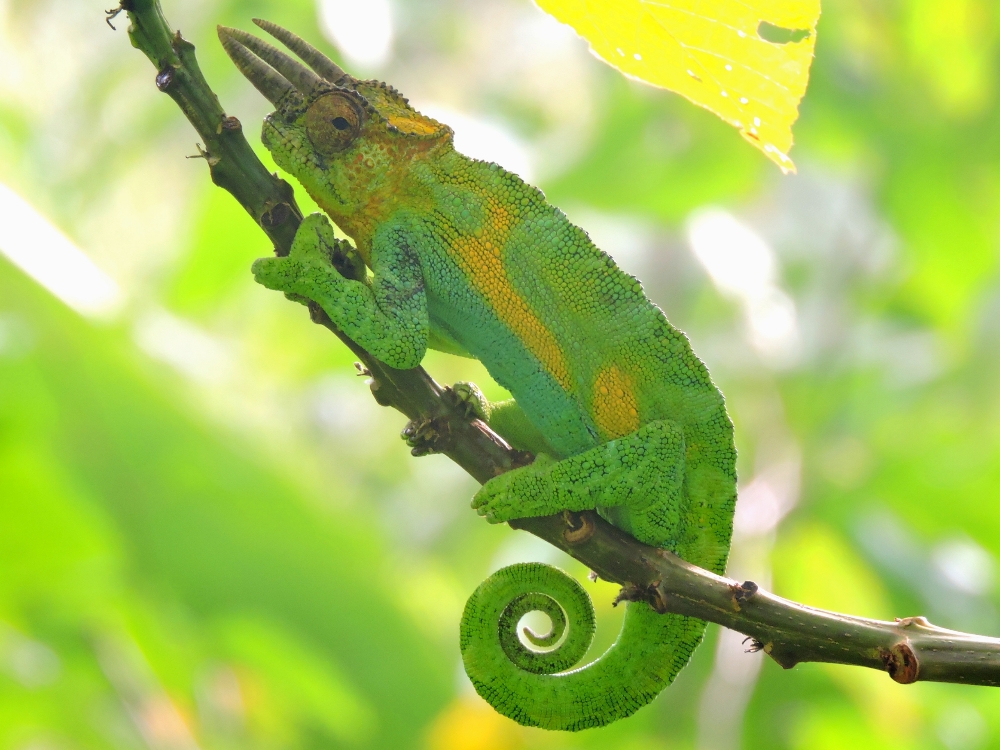
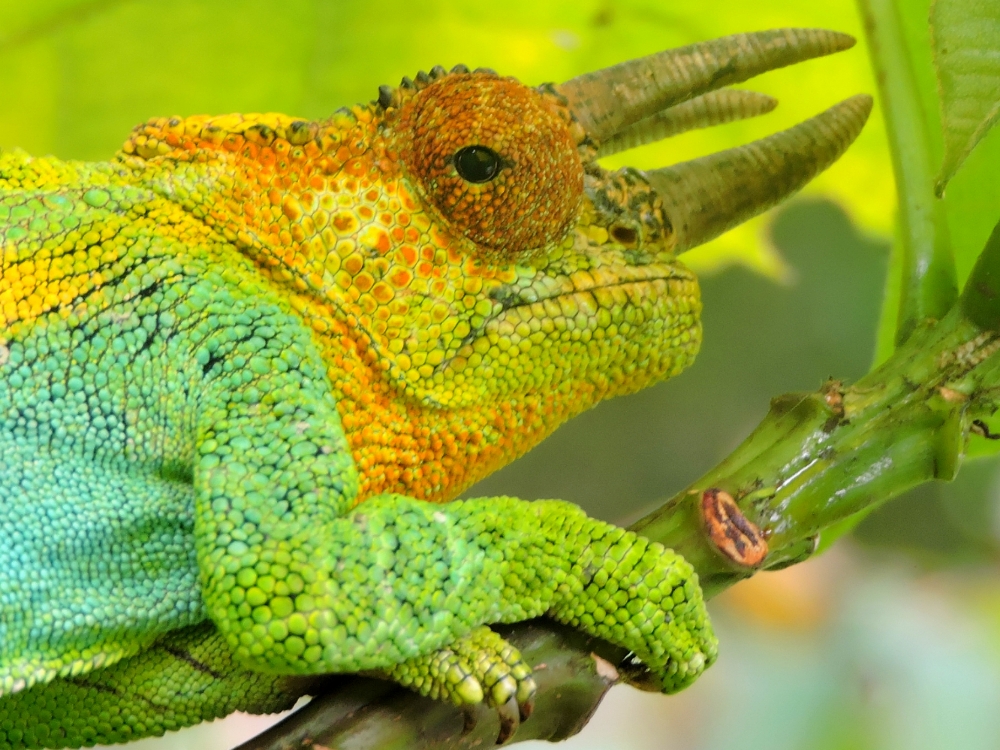
In addition to being a lengthy and costly endeavor, a trek to the high regions of the park must take the weather into account. Despite being located close to the Equator, the areas above four thousand meters in elevation are usually quite frigid, and rain or snow is a distinct possibility. Consequently, I was quite happy to spend one of the more enjoyable afternoons I have had in a while simply sitting on the Lodge veranda, watching the clouds repeatedly engulf, then depart from, the peaks of the mountains, while contemplating the accuracies of my recent bird identifications.
